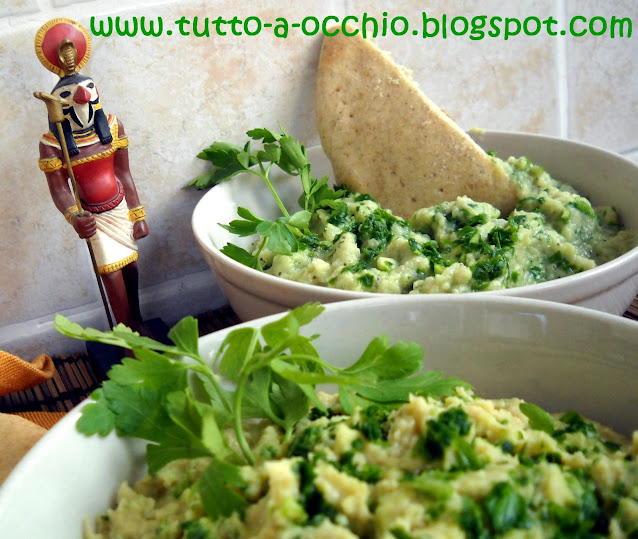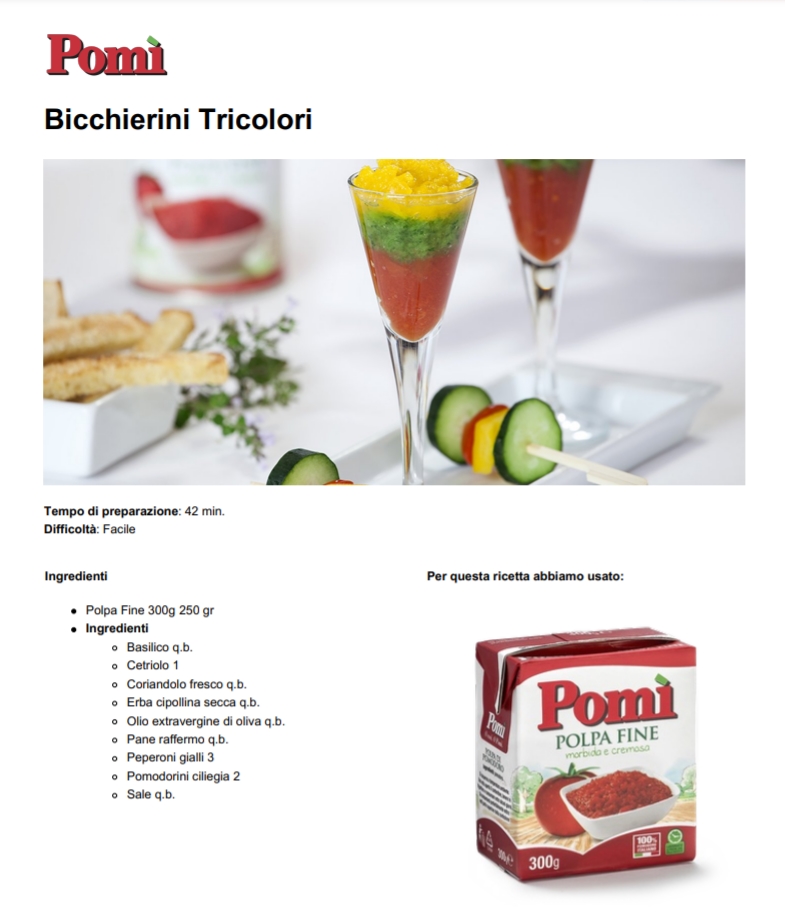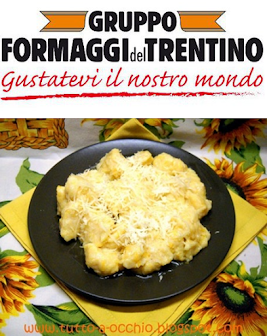La parte internazionale di me - Crema di melanzane, crema di ceci e pane azzimo / Cream of eggplant, cream of chickpeas and unleavened bread
Spesso ho parlato della mia passione per l'egitto antico. Per i riti e le tradizioni ma anche per la vita quotidiana di questo antico popolo.
Nell'antico Egitto il Nilo aveva un ruolo fondamentale per la vita degli egiziani. Una volta all'anno il Nilo straripava dagli argini e inondava il terreno, quando si ritirava lasciava un limo fertile che concimava la terra.
Si coltivavano sopratutto cereali e legumi, e anche il lino che veniva usato per gli indumenti.
La carne era riservata ai nobili e ai ricchi, il popolo mangiava sopratutto pane, cipolle, legumi e pesce.
Oggi ho preparato due tipi di crema da mangiare come antipasto insieme al pane azzimo. La tradizione racconta che il pane azzimo è il pane che prepararono gli ebrei prima dell'abbandono delle loro case in occasione dell'Esodo. Non ebbero il tempo di farlo lievitare quindi il pane rimase basso e poco morbido.
Ricetta
Per le due creme gli ingredienti sono uguali tranne che per l'ingrediente principale quindi :
(quantità per ogni una delle creme)
2 cucchiai di olio EVO
2 cucchiai di yogurt bianco
1 spicchio di aglio tritato
un cucchiaio di prezzemolo tritato
un cucchiaio di succo di limone
sale
Per la crema di melanzane (Baba ghanouj):
Prendete una grande melanzana, bucherellate la buccia, avvolgetela nella carta di alluminio e mettetela a cuocere in forno a 200 gradi finchè è morbida.
Appena è tiepida togliete la buccia e frullare la polpa insieme a tutti gli altri ingredienti.
Per la crema di ceci (Hummus):
Frullate una tazza di ceci prelessati con tutti gli altri ingredienti
Per il pane azzimo:
225 gr di farina integrale
100 gr di acqua tiepida
un cucchiaino di sale
Olio EVO
Impastate la farina mescolata al sale con l'acqua. Quando l'impasto sarà diventato liscio ed elastico formate una palla e fatela riposare per un ora coperta da un canovaccio.
Dividete l'impasto in quattro parti e formate quattro palline. Spianate le palline col mattarello fino ad avere dei dischi di 2 cm di spessore. Bucherellate la superficie e spennellate con olio EVO. Infornate a forno caldo a 240 gradi per 15 minuti.
----------------------------------------
I have often spoken of my passion for the ancient Egypt. For the rituals and the traditions but also for the daily life of this ancient people.
The Nile in ancient Egypt had a fundamental role in the life of the Egyptians.
Once a year the Nile overflowed its banks and flooded the land, when he will retire, leaving a fertile silt that fertilized the earth. It grew especially cereals and legumes, and also the flax which was used for clothing. Meat was reserved for nobles and wealthy, people ate mostly bread, onions, vegetables and fish.
Today I have prepared two types of cream to eat as an appetizer with unleavened bread. The tradition tells that the unleavened bread is the bread that the Jews prepared before the abandonment of their homes during the Exodus, they did not have time to leaven the bread then it remained low and slightly soft.
Recipes
For the two creams ingredients are the same except for the main ingredient:
(quantity for each one)
2 tbsp olive oil
2 tbsp white yoghurt
a clove of garlic (chopped)
1 tbsp parsley (chopped)
1 tbsp lemon juice
salt
For the cream of eggplant:
Take a large eggplant, prick the skin, wrap in foil and cook in oven at 200° until it is soft. As soon as it is warm, remove the skin and blend the flesh with all the other ingredients
For the cream of chickpeas:
Blend one cup of cooked chickpeas with all the other ingredients.
For the unleavened bread:
8 oz whole wheat flour
3.6 oz worm water
1 tsp salt
Olive oil
Knead the flour, salt and water.When the dough becomes smooth and elastic formed a ball and let stand for one hour covered with a cloth. Divide the dough into four parts and form four balls. Flatten the balls with a rolling pin until you have the disks of 2 cm thick. Prick the surface and brush with olive oil. Bake in oven at 240° for 15 minutes.









0 comments